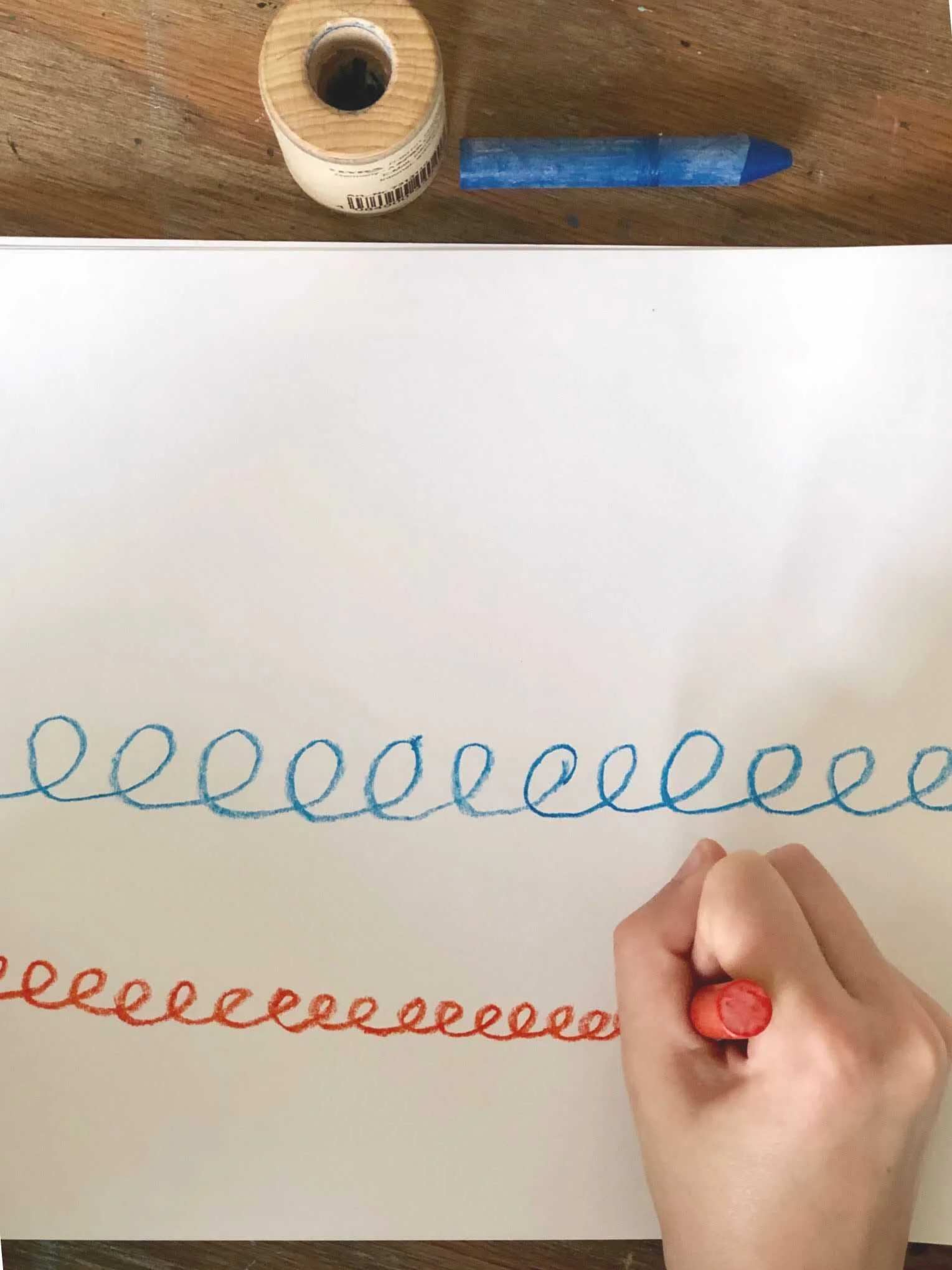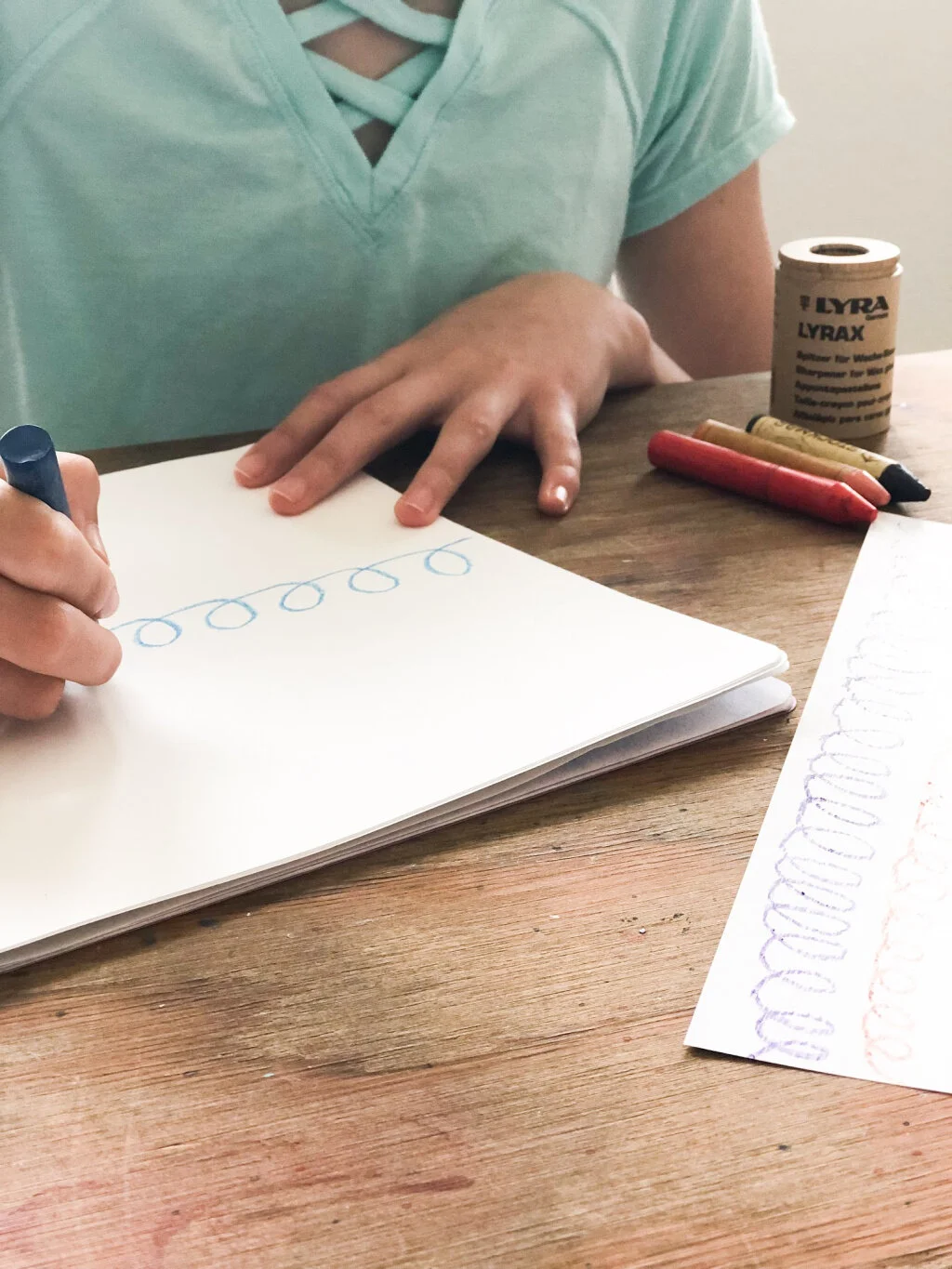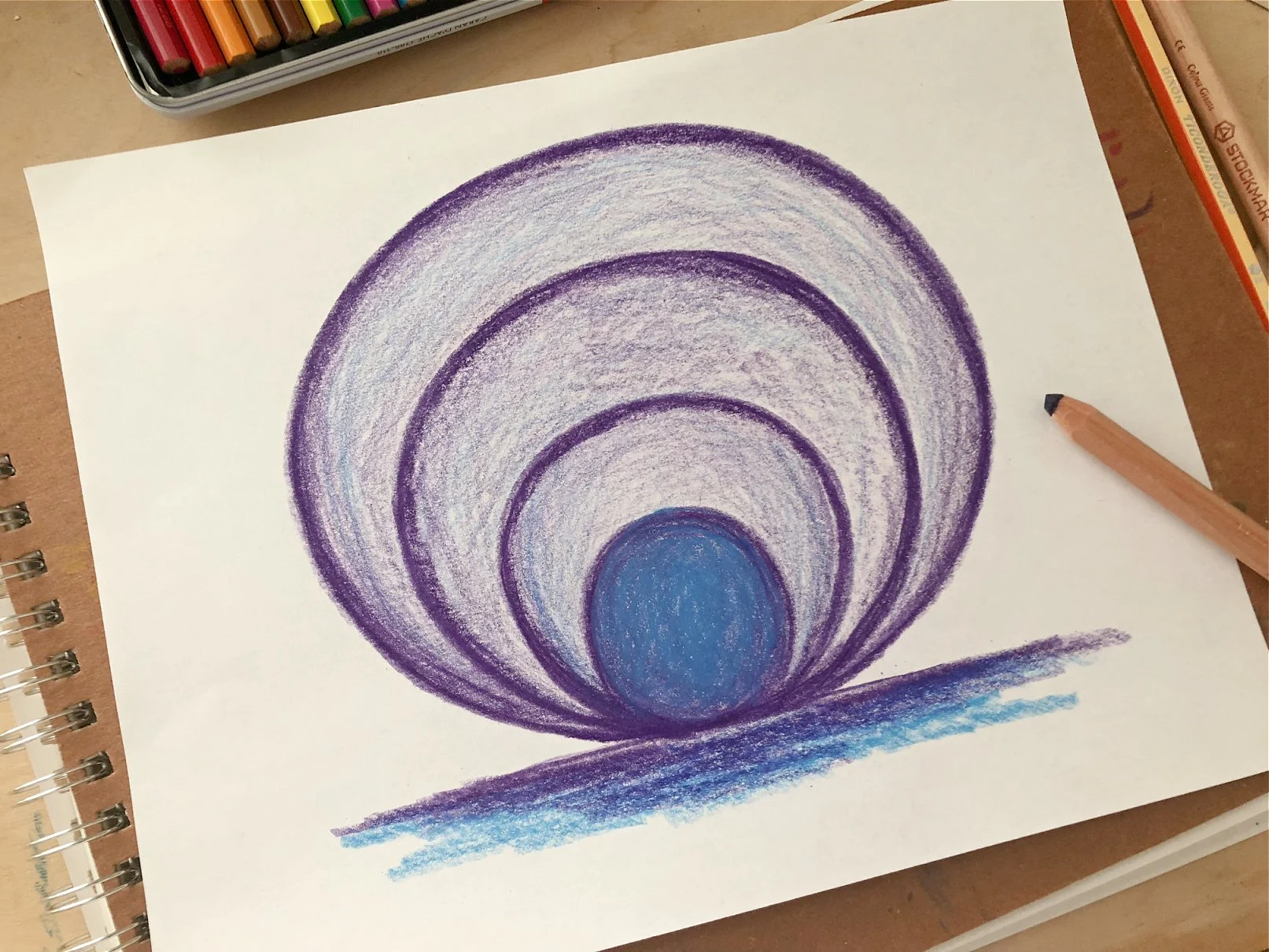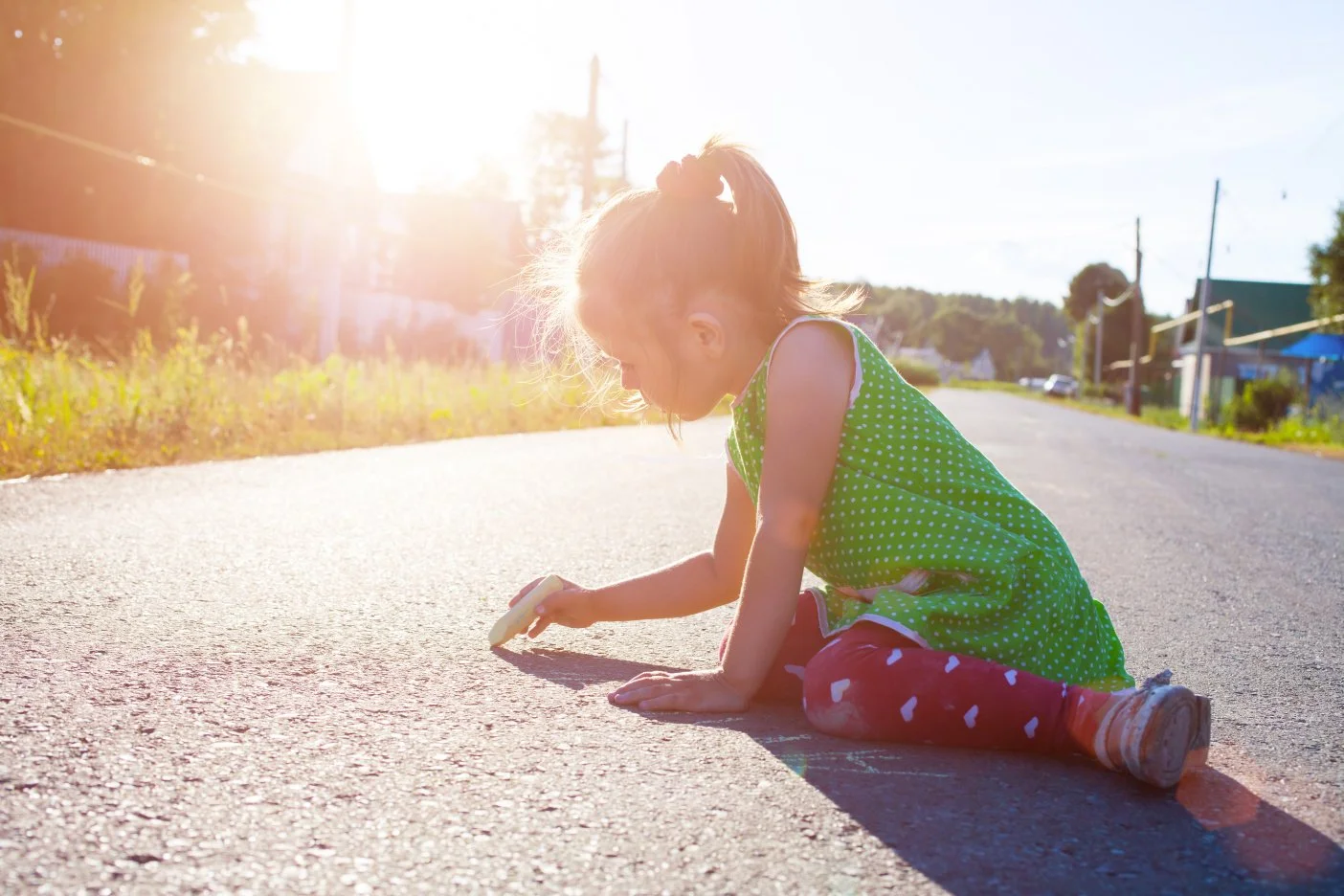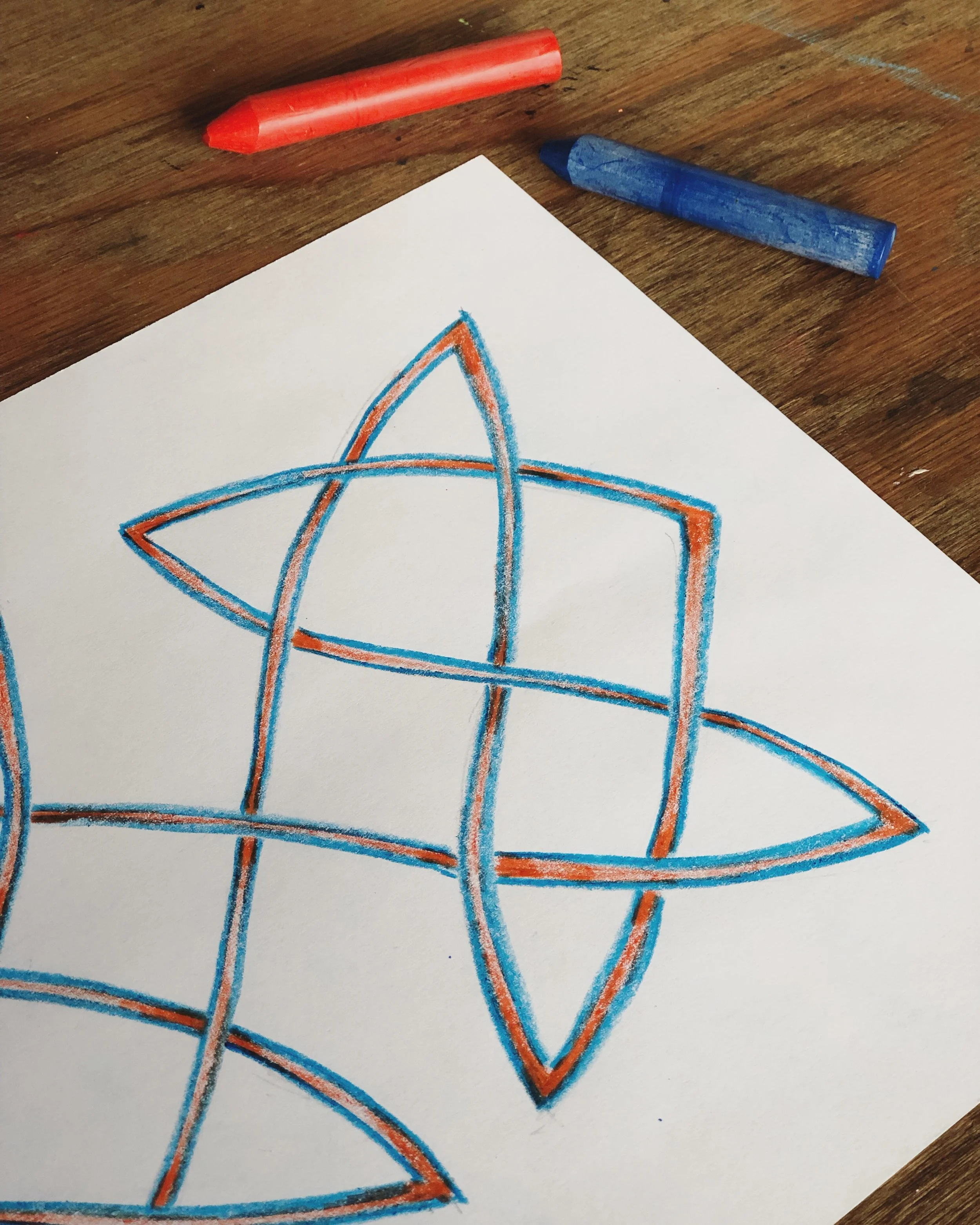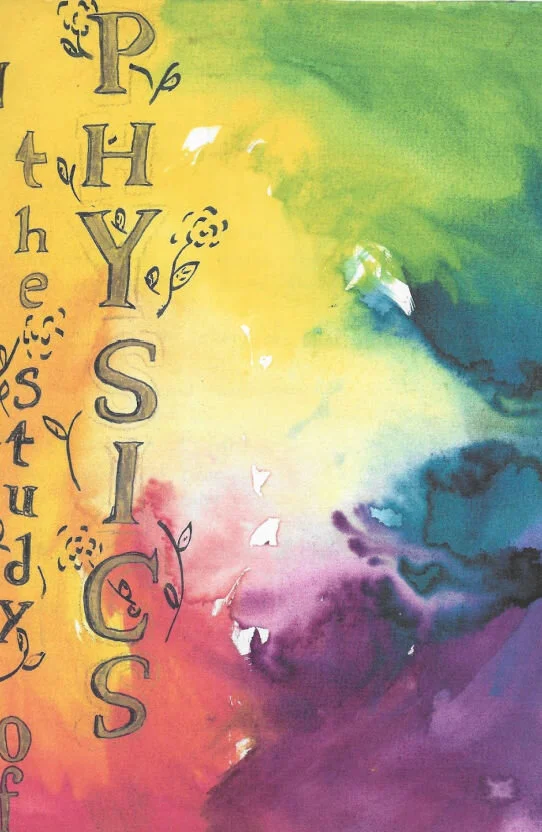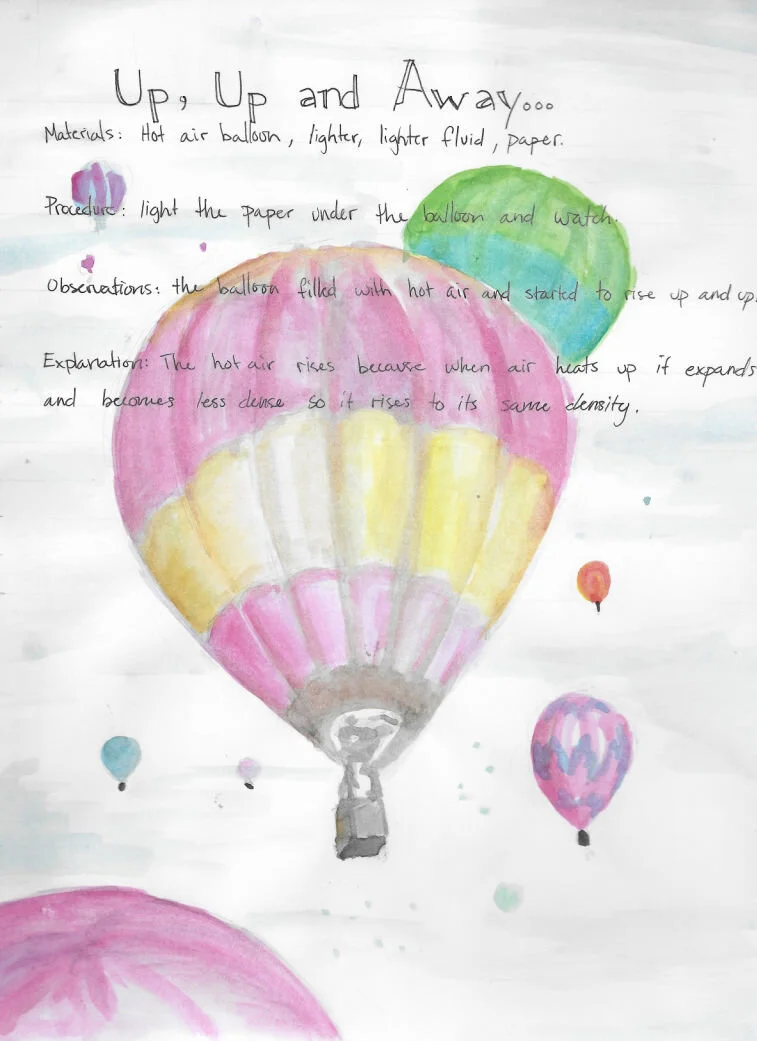
Waldorfish Blog
Keep it Simple: Choosing Stories or Imaginations for Form Drawing
With Waldorf form drawing, keep it simple and doable!
Waldorfish Form Drawing teacher Rev Bowen was recently asked by a caregiver about whether form drawing lessons need to include full stories, or not. We wanted to share his thoughts with the Waldorfish community at large!
Here is a commonly-asked question in regard to form drawing: "Do I need to tell a story before every lesson?"
I had this question too. It makes sense to have this question.
In terms of main lesson work, the story is the "drop of light". Every consequent lesson should have some root in the preceding story. This integrates the learning. The imagination of the story, the images that the child built while listening to the story being told, will germinate through the process of sleep and provide a warm-earth, nutrient-rich loam for the growth of new learning and understanding. 2+3 can be a fun and flexible math lesson when it is brought out of a story.
Form drawing is all about the process and the practice!
*So, why would we not tell a story before other lessons too?
It is truly possible to have too much of a good thing.
So, too many stories living in the child's soul will create diminishing returns. That is why I only use little imaginations for form drawing. Yes, we want them to enliven their work with imagination, but imagination does not require a full story. The image of a waterfall, assuming the child has actually experienced a waterfall in real life, is usually plenty to enliven the idea of a straight line from top to bottom, for example.
So, if you have felt any pressure to be a bottomless well of stories, I am happy to tell you that there is no need.
Simple images, especially from nature, can be very effective. And the great thing about it is that we will improve the more we use them. The world is full of images and examples. The more we start to use them, the more they become obvious to us.
~Rev
More resources related to form drawing:
Who our courses are for.
Waldorf at home this year?
Since 2012, we’ve been crafting online courses for independent homeschoolers, and Waldorf teachers seeking training in specific subjects.
Additionally, many families using a packaged or “all-in-one” Waldorf homeschool curriculum use our à la carte courses for further enrichment and to supplement gaps. (Because let’s face it, no single curriculum will meet the needs of every child!)
Bring Waldorf art to your homeschool rhythm- we’re ready to support you along the way!
Please reach out with questions. Here’s a quick summary of what we offer, and who the intended audience of each course is:
Ideal for CHILDREN working independently
and ADULTS for planning/training:
These courses can be used in a variety of ways, by both children and adults:
Ideal for adult & child working in tandem or
solo adults for planning/training:
Ideal for adults/caregivers:
Are you ready to bring Waldorf art techniques to your homeschool routine? We can’t wait for you to join us!
Science in the Waldorf Middle School: Starting Something New
Student work from a Waldorf seventh grade physics main lesson book.
Teaching “science” oftentimes sounds a little bit overwhelming, especially to those of us teaching at home, or who haven’t opened a science textbook in a while!
Throw in trying to make science appeal to middle schoolers, and it may sound downright scary to jump in and teach!
Additionally, when one begins to research how science is taught in the traditional Waldorf way, it doesn’t take long to run into big words like “phenomenology,” quotes from Goethe, and long, vague supply lists.
Phew. No wonder we get overwhelmed, right? But no fear!
Teaching science for grades 6-8 really is possible for any educator who is enthusiastic, takes a little time to get organized, and is ready to explore the natural world in a new, exciting, and downright fun way!
(Honestly, this mindset applies to teaching the middle grades in general! To learn more about Waldorf middle school curriculum, click here!)
Though science is woven into the early grades from day one (think: teeter totters in kindergarten, botany in fifth grade, the study of man and animal in fourth grade, the study of agriculture in third, and so on) sixth grade marks the beginning of focused, scientific study. More specifically, we’re talking about physics and chemistry.
There are many reasons for this shift, and with most (all?) things in Waldorf education, it has to do with the development of the child, and where they find themselves around middle school age (12-14 years old).
In Waldorf education, studying science is a colorful, vibrant experience!
A middle schooler is moving out of early childhood, and losing some of their awe and curiosity and inquisitiveness for their surroundings, and are beginning to ask what the natural world has to hold for them. And of course, many children are experiencing puberty, which is a huge shift in their emotional and physical body, to say the least!
So, why science? Studying subjects such as physics and chemistry in middle school rekindles excitement for the natural world through a child’s own observations.
The child is asked to use their senses, and budding logical thinking in new ways to discover laws of the natural world. The scientific demonstrations provide a chance for the child to see the cause and effect of nature right in front of them: “If this…, then that…'' How comforting for a child living in the tumultuous chaos that is so often associated with puberty, middle school, and teenage years!
Teaching science is also a shift for the educator.
Instead of memorizing stories or material, prep for these blocks require gathering of supplies, and practicing demonstrations (which we highly suggest doing early on and with plenty of time to play and prepare!)
It’s hands-on, active, and engaging, and perfect for the middle schooler! Remember that word “phenomenology?” That’s what the educator is curating here: a study of nature’s lawful phenomena in accessible, doable, and fun ways.
Student work from a Waldorf science main lesson book.
Instead of presenting information through story or otherwise in front of the child, the teacher is now demonstrating a law of nature through an experiment, without saying much of anything!
That’s right: the educator uses conversation to guide and moderate, but ultimately, it is the job of the child to discover scientific law.
A teacher may ask “What did you hear? See? Smell? Feel? What did you notice? How do you know that to be true?” and consistently brings the children back to using their concrete observations, while allowing them to find their way to a solid scientific conclusion.
The educator doesn’t do much “telling,” but instead validates, confirms, and encourages a middle schooler’s growing ability to discern and discover nature’s many laws.
It’s exciting stuff, and marks a shift into a new paradigm for both the teacher and student, one where the educator takes on less of a direct role, and cultivates the independence and skills of the student to bloom.
So, are you ready to jump in and teach some science? We promise, with sufficient preparation, and faith in your own and your student’s abilities, you’ll enjoy teaching science more than you ever expected!
Are you interested in bringing Waldorf-inspired science courses to your homeschool curriculum?
Check out our physics and chemistry courses for grades 6-8! Our amazing instructor, Ari Magruder, has created online courses that provide everything you need to bring the joy of discovery and exploration to your student’s educational experience.
About the Author
Ari Magruder is currently the middle school science and math teacher at Sacramento Waldorf School. She also contributed to the teacher education and summer Art of Teaching programs at Rudolf Steiner College for many years.
Start as You Mean to Go On: 5 Tips for Cultivating Focus and Concentration Skills for the Young Student
The path our children will choose once they are grown is unknown to us, and not all will find themselves going to a traditional college or university.
But what we do know is that different habits and strategies apply not just to academic success, but to success in all areas of life!
Student support comes in many forms!
So, how can you support your grade school child now with their study skills, balancing their time, and getting the most out of their learning experience?
For several years, I worked as a Learning Strategist at the Academic Success Centre at the University of Alberta in Edmonton, Canada. These centres exist at the majority of colleges, universities and polytechnic schools in North America and offer some permutation of academic support in writing, learning, exam taking, public speaking, and practice in communicating effectively with professors and peers alike. I was part of a team of staff that provided learning, writing and communication strategies to students, including how to study, exam taking strategies, time management, and focus and concentration.
From grade school to post secondary education, students face many of the same challenges with academic skill acquisition. Students were generally finding challenges in these common areas:
Focus and concentration (in-class, when studying, or taking tests).
Time management (in terms of studying, completing assignments, and fitting in “life” as well!)
Maintaining motivation to stay engaged with coursework.
Learning and applying study and test taking strategies.
Let’s take a look at what we can be doing now with our seven to fourteen year old children to create a smooth transition to learning in high school and beyond. (And for even MORE ways to support your child in their learning journey, click here!)
Keep in mind that many university grads say that they wish they’d understood sooner that there is no one right way to be a successful student. Learning takes on many shapes and forms!
You may be asking yourself, where do I focus my efforts first? I suggest giving attention to focus and concentration, since without this, there is no learning!
Let’s get started!
Tip One: Sleep and exercise
What methods can you try to cultivate balance in your young child’s routine?
As the Friendly Giant* would say, “Look up, way up,” or in our case I invite you to zoom out, way out to our basic physiological needs of sleep and exercise. These two things alone go a long way to making focus and concentration possible. As you might imagine, sleep and exercise often get tossed aside by well meaning, “serious” students in college and university. Determine what is the right amount of sleep and exercise for your child, and then realizing it will need to be adjusted as they grow is the first step. Our seven to twelve year olds generally need 9-10 hours and our teens may need up to 11 hours! We can use exercise strategically, perhaps right before and after a learning activity that will involve staying relatively still. Sleep and exercise can greatly improve focus and concentration for our kids and for us too!
Tip Two: Schedule lessons in small chunks
As anyone working with children knows, we need to keep the time on activities relatively short in order to maintain focus. Of course, the time our children can spend on tasks increases as they get older, but the key here is to meet them where they are, right now. So if your child can focus on their learning tasks for about 15 minutes, then set up a schedule with 15 minute blocks of learning sandwiched between blocks of:
Exercise
or snacks
or gardening
or a different learning task
or artistic activities
This may mean splitting up a full lesson into several, smaller 15 minute chunks. Better to stop the activity before you know your child will start drifting off to make better use of everyone's time!
Tip Three: Create a distraction free environment
Taking time to create a learning space that is free from distractions will also go a long way to promoting focus and concentration (As I’m writing this I can hear my family arguing in the kitchen about who will do the dishes….sigh).
For instance, we can fight the urge to cover our walls with too much visual information. We might also tell our kids what distracts us when we are trying to work and what we do to minimize those distractions, and create a dialogue between parent and child; we are not all distracted by the same things and it’s helpful for children to realize this!
You can help your kid determine their top 3 distractors and possible solutions, e.g:
Minimizing distractions will help your child find more concentration.
Designate a specific place for devices to go when other learning is happening
Noise from other family members, especially now that more of us are at home might be dealt with by wearing headphones (got them on right now!)
Other unrelated thoughts popping into our minds can be placed in a “parking lot” aka a piece of scrap paper to be dealt with later.
The key here is to have your child come up with the solutions as much as possible and to revisit their effectiveness from time to time.
Tip Four: Preparing for learning activities
Another way to help children with their focus and concentration during learning activities, lessons, classes, etc. is to do what in my work we called “Pre-lecture prep”. Think, “Look at the map before you start to drive”. Sounds obvious, right? Why then do a lot of us, (me included), neglect or rush through this step? We can model this for our kids by verbalizing our own preparation for activities, for example:
Okay, I need to get out the art supplies and re-read the lesson description. So first we are….and then we will...Oh, and I need to set up the space we will work in too. Right, and last time I didn’t give us enough time so I need to check that we have at least an hour, so we have time to clean up at the end.
This strategy is especially effective for older children who are learning to be more self-directed and motivated! Allowing your child to see the “journey” they are about to embark on, including the steps and time needed, helps them to better stay on track and not get “lost”. You might even want to draw the plan out on paper so you can both refer to it during the activity. Over time you can have your child join you in this pre-activity prep. “Hey, did I remember everything?”. They will love to try and think of anything you might have forgotten!
Tip Five: Retrieving what we know
Reviewing an activity, your day, or an experience is always worth the time!
After doing your pre-activity prep, a fun way to tie today’s lesson into previous lessons and knowledge is to do what we referred to at work as a Mind Dump. Have your child write or draw out everything they can remember learning from the last lesson and/or things they already know about today’s topic. This will not only help with their focus and concentration but will also build confidence, interest and aid with memory storage of the new content they are about to learn.
(In Waldorf education, this is known as the “Review” portion of the main lesson, which Steiner indicated is perhaps the most important activity for children to engage in! Reviewing what one has learned thus far builds connections, and allows children to process information that they have taken into their sleep from the day before in profound ways! However you do it, this activity will be a great asset in your child’s learning.)
As we consider our children’s future, it’s easy to get overwhelmed- how can we support, guide, and motivate them to find their right path, whatever that may be?
This question is even more intensely highlighted by the switch to virtual learning, and the great upheaval that many children have experienced with their usual school and daily schedule.
The effects of good sleep, doable activities, eliminating distractions, thorough preparation, and purposeful review are huge; so much so, that they are still given as tips for students studying at university.
We’re all about simple and meaningful, so start small. What’s one thing that resonates with you as an easy strategy to incorporate into your routine? Build from there- once your first piece feels easy, add another in!
A little more balance in a child’s academic day goes a long way into improving concentration and focus, and therefore, better learning!
References
-Brown, Roediger III and McDaniel (2014). Make it Stick: the Science of Successful Learning, Belknap Press: An Imprint of Harvard University Press
-child-development-theories-2795068
-The Friendly Giant, The_Friendly_Giant
About the Author
Susan is co-raising two children who are now 13 and 17 and attending school remotely, for the time being at least, at a public junior and senior highschool in Edmonton, Canada. Previously she taught families with babies through preschoolers in classes that incorporated music, movement and sign language.
A long, long time ago she taught adult literacy at a program mostly attended by english speaking newcomers who did not get the chance in their country of origin for much schooling due to socioeconomic or war related reasons. This program also served students educated in Canada who none-the-less continued to struggle with reading and writing.
She holds a BA (honours) Psychology and a Masters of Education from Western University, London, Ontario, Canada.
Looking for something?
Welcome to Waldorfish! We started this adventure in 2012 out of a desire to make Waldorf training more accessible to class teachers in remote locations and to homeschooling families everywhere! Read more, click here.
WE WON! Our Weekly Art courses were voted “best interactive art program.” Learn more about the award, here.
A few of our most popular blog posts:

